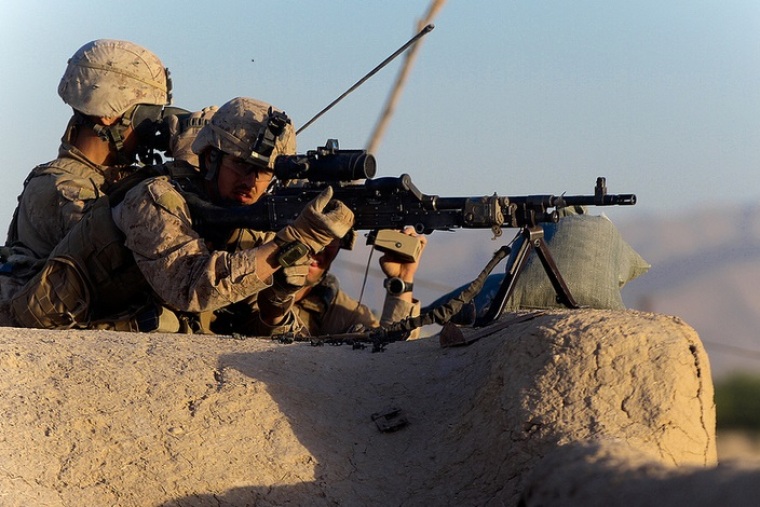VET'S DAY TRIBUTE: The blood of heroes never dies

COLFAX, La. (Christian Examiner) -- Every war has its own unique horrors, with the improvised explosive device arguably the weapon most feared in our fight against terrorists in the Middle East today. And, typically, threats and brutalities are the lasting details that define a war.
"Stay alert and stay alive," my pastor was told while a soldier in Afghanistan during the Gulf War.
A Vietnam-era Marine sniper I once knew still suffered from combat trauma years after he served. "I kill people," he said, eyes going wild as he spoke. "That's what they taught me. That's all I know."
The pains and depravity of the Korean conflict were immortalized through a television series that used comedic relief to contrast with the horrors portrayed in the mobile surgical unit's operating room.
For most Americans, though, it was my father's war, WWII, that was "The Big One."
But unlike most soldiers who try to one-up the tales of fellow veterans, my father always deflected questions about the personal hardships of his military service. Even on his eightieth birthday, three years before he died in 2002, he spoke of the "good times" he had had on Guadacanal, building a motorcycle out of spare parts off the airplanes he repaired, and racing it down the beach with his friends.
He never spoke even once about his own tribulations experienced during the six-month-long, near-daily bashing of the island beachhead on which he was stationed; nor of seeing men die around him among the 7,100 killed during the hellish fray (one out three soldiers defending the island); nor of suffering with recurring malaria for two years afterward, until he was released with the end of the war.
But he never let our family forget the sacrifices of others that kept our country free.
Every year, my always-strapped-for-cash father bought little red poppies for each of us eight kids to wear on what is now Veterans Day.
"Wear them for my friends," he would tell us. "Some of them didn't come home."
Today it's popular to wear the crepe-paper poppies on Memorial Day – the day we honor those who have fallen in battle. But my father gave them to us to wear them on Veterans Day to honor all who have served and are serving our nation. I remember how pretty that bright splash of red looked as Daddy pinned them on our drab winter-wear overcoats.
The story behind the poppies is compelling.
In 1915, John McCrae, a British medical officer, noticed scarlet poppies waving near tombstones in the May breeze at the graveside of a friend.
He wrote a poem, In Flander's Field, that became a huge success after being published in a popular British magazine, Punch. Two days before the Armistice that ended World War I was signed, Moina Belle Michael, a volunteer at YMCA headquarters in New York City, read an article about McCrae's poem and felt compelled to wear a poppy every day in remembrance of the soldiers who had given their lives to keep her safe.
Michael later wrote a four-line poem about the poppies to explain their appeal to her – "that [the] blood of heroes never dies" – and in the euphoria that followed the ending of the "Great War," others began to wear poppies to honor the military personnel who had died in the service of their country.
Anna Guerin, a French national, heard about the hand-made poppies that were being distributed in America, and decided to sell poppies to raise money to help fund the restoration of the war-torn regions of France. The idea caught on in America and today the VFW sells "Buddy Poppies" and the American Legion, "Memorial Poppies," both to help veterans and their families.
So, it is good to remember those who died in service by wearing poppies on Memorial Day.
But I like my father's idea of wearing them to remember, also, those who are yet with us on Veterans Day.
In all, about 13.1 million U.S. veterans are living, and you can thank them for their service by wearing a poppy today. Get one for each of your kids and grandkids, too. It's a great way to teach them the blood of heroes never dies, and that many of those heroes still live.